By Lia Aurami for Enlivening Edge Magazine
You can use this article as a travel brochure, about one place to visit, in a vast land that no doubt you’ve heard of, called “new concepts of leadership.”
This is one place I’ve found especially valuable, but any search on the topic will turn up many books, programs, systems, sites, articles, videos, movies on the newly-emerging (and some very ancient) ideas and practices around “leadership.”
New kinds of leadership are being considered by many people: servant leader, conscious leader, complexity leadership, presence-based leadership, leadership intelligence, collaborative leadership, generative leaders, ecosystemic leaders, space-holding leaders, (and here,) collective leadership, responsive leaders, leaders outside of hierarchy, etc. You can explore starting here or here, or here, or anywhere!
It could be useful to come at it from a different angle, looking closely at what someone labelled “a leader” might actually be doing: what function within the group endeavor they would be performing, and how that is related to the purpose of the group.
Let’s see what we could discover by using this definition:
A person is a leader while/when performing/exhibiting a leadership function for/in a group of people.
Somewhat like waves on an ocean, we can see leaders and leaderships pop up and recede, in emergent, self-organized ways, even in the most structured of situations, if we look to see what’s really happening underneath the formal descriptions!
With the help of this list, you can have the fun of watching each function pop up in and then recede from different people at different times in a different situations in a group.
We can take the perspective that the group purpose is what creates leadership happening as it needs to happen, in order to express/manifest/accomplish the purpose.
So the essence of “leadership” is “moving toward purpose” and a “leadership function” contributes to that movement.
Or we might say, energizing the edge of the future moving into the present, is leadership—whatever is situationally required for such movement.
We say Person is a leader. Or we say Person is leading. It might be more useful to say: Any situation has multiple leaders, each doing some of these things.
We can see leading as doing or performing some of these functions. Some leaders are doing one or more; some are good at some functions and not good at others. Many situations need many of these functions!
This list does not distinguish between empowering leaders and power-over leaders. That distinction is of course super-important in life, but probably not for analyzing the notion of leadership.
Some leadership functions we want more of in the world; some we want less of in the world.
Also I am less interested in having this list be “accurate” as to whether the behavior is truly “leadership.” I am more interested in having you consider and arrive at your own understanding for your own situation. And are there functions you’d include here that aren’t here? Let me know!
In what way does each of these functions help a group move toward its vision or purpose?
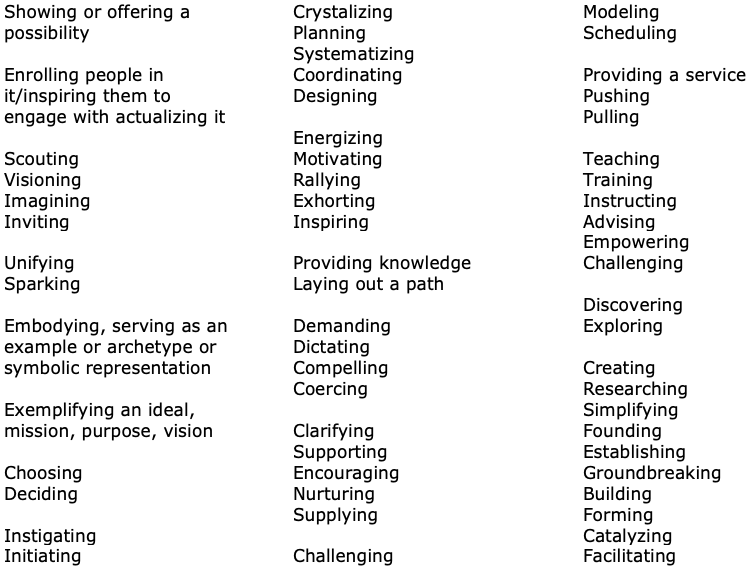 It might be a useful perspective to see that whoever is doing any of those in a situation, is a leader there, is embodying a leadership function at that time in that way.
It might be a useful perspective to see that whoever is doing any of those in a situation, is a leader there, is embodying a leadership function at that time in that way.
What functions are NOT leading or leadership? What is “not being a leader?”
Evryone who works on a project, toward a purpose, is contributing in some way. So what are the differences among leading, following, and such functions as hindering or sabotaging movement toward the purpose?
Which of these would you consider “not leading?”

Does leading require followers?
While we usually think someone has to be following in order to regard someone else as leading, this “functions” analysis doesn’t require that dichotomy. (Not to mention the complexities around leading and following amusingly portrayed here and talked about here.)
How might the concept of “leadership functions” be useful for you?
If you say “X is the leader of this project/group/endeavor,” it might reveal something helpful to look over the list and see which leadership functions that person is actually performing—and are there important leadership functions actually being performed by others? How might that understanding improve the group dynamics and team effectiveness?
Perhaps your group could look over the list and see which leadership functions you think are most important for moving toward your group’s purpose, and be sure that each of them is being done by someone?
Or perhaps if you are “the leader” you could look over the list, see which ones you love to do and are good at, do more of those, and find others in the group to do the ones that they love or do better than you do?
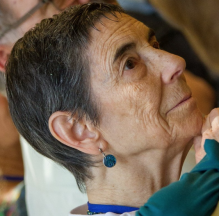
Lia Aurami: Within Enlivening Edge, I energize a variety of roles to express my sacred life mission: to amplify our human capacity for living, working, and relating within shared higher consciousness. That optimizes the chances of success of transformative changes, by operationalizing collective and spiritual intelligence to help organizations be efficient and effective. I delight in creating and amplifying synergistic connections toward all that!
Featured
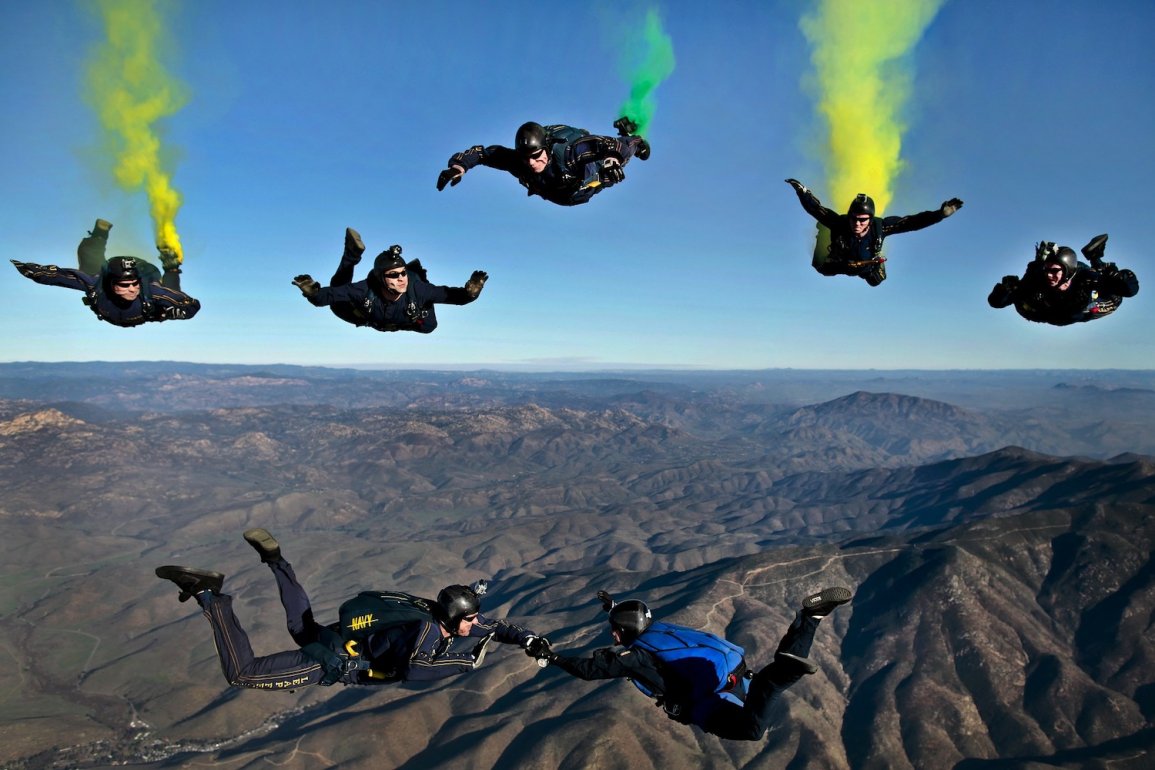
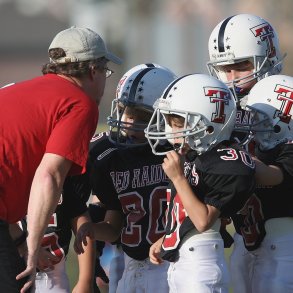

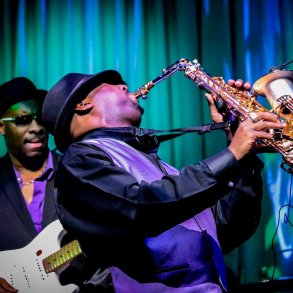

From Margaret Wheatley, from her book Leadership and the New Science, this aligned quote:
Here is a very partial list of new metaphors to describe leaders: gardeners, midwives, stewards, servants, missionaries, facilitators, conveners. Although each takes a slightly different approach, they all name a new posture for leaders, a stance that relies on new relationships with their networks of employees, stakeholders, and communities. ~ Margaret Wheatley